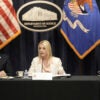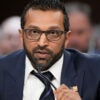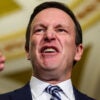Polish Foreign Minister Radoslaw (Radek) Sikorski was probably being polite when he described, in a conference call on Friday with U.S. policy experts, the U.S. government as “a friend of the Eastern Partnership” initiative, a Polish-Swedish venture within the EU, which covers Ukraine, Moldova, Belarus, and the three countries of the Caucasus.
The disparity between the U.S. and EU in terms of economic resources dedicated to Eastern Europe is overwhelming. While the EU spends billions on supporting this partnership, the United States spends a grand total of $311 million annually on democracy and civil society programs in all six countries. That is not a whole lot, given that these nations all have strategic importance for the United States and all teeter on the edge between democracy and authoritarianism; between western influence and Russian pull. When queried about the paucity of the U.S. outreach, Sikorski equally politely commented that in these countries, “a little money goes a long way.”
The Daily Signal depends on the support of readers like you. Donate now
The problem here is not the lack of funding per se, but the lack of engagement and strategic myopia—or worse—that it indicates on the part of the U.S. government. It is unfortunately the case that the United States, for a variety of reasons, is allowing relationships with countries in Central and Eastern Europe to deteriorate or atrophy as the U.S. leadership focuses on a other issues, like disengagement from Iraq and Afghanistan, global climate change, international development aid, and the Middle East peace process.
Recent development in EU’s Eastern Partnership members raise deep concerns among the proponents of Euro-Atlantic integration, such as Ukraine’s announcement that it is no longer interested in a NATO Membership Action Plan, for which the United States and Poland strongly advocated at the NATO summit in Bucharest.
Both the EU and the U.S. should be more involved in Belarus, where December presidential elections may provide a challenge to the autocratic President Alexander Lukashenko. Russia has launched vitriolic media attacks on Lukashenko, and is looking to replace him with a malleable pro-Moscow candidate.
The lack of U.S. policy focus on Central and Eastern Europe is a depressingly widespread phenomenon, one that extends even to the CEE allies that stood staunchly with the United States after the September 11, 2009 attacks. An upcoming Heritage Foundation research paper—“The U.S. Takes ‘New Europe’ for Granted at Its Own Peril” —describes the decline of the relationship and its consequences.
For political leaders in the region, the U.S.-Russian rapprochement known as “reset,” the signing of the New START Treaty, and the downgrading of U.S. missile defense plans,
have been deeply troubling. Among the population, enthusiasm for U.S. leadership under President Obama has waned significantly, rating now behind Western Europe, a reversal from the Bush years.
Meanwhile, Russia has lost no time widening and exploiting this split, moving aggressively ahead with its own “neighborhood policy,” influencing elites, pursuing a well-funded international media strategy, and re-establishing political relationships.
Russo-Polish relations are particularly illustrative of this point. Sikorski noted that the new warming trend has lasted over the past five years, and that Poland has several agreements with Russia to show for it. “We are not an easy partner for Russia,” he noted. “We are their guilty conscience.” As an example he cited the fact that Prime Minister Vladimir Putin even went to Katyn (site of the 1940 Soviet massacre of 30,000 Polish officers by Stalin’s NKVD secret police), as well as the release of some Soviet-era documents relating to the horrific event. Furthermore, Sikorski noted, the tragic plane crash of the Polish President Kaczinski and political leadership last summer not far from the same Katyn Forrest did not traumatize the relationship between Poland and Russia as it might have just three years prior. These are different times.
What does the United States government do so as not to lose its strategic influence with a set of relatively new, but staunch, allies in Eastern Europe?
- Reform the U.S. Visa Waiver program, which still means that Polish residents have to line up for visas to enter the United States, when travelers from other European countries do not;
- Work with the countries of CEE on security cooperation and democracy promotion. Make U.S. officials visible and available to the publics of these countries and reestablish public diplomacy institutions, such as America houses, that have been allowed atrophy since the Cold War;
- Reexamine U.S. decisions on international broadcasting into the former Soviet Union, where services have been cut even in the absence of local free media.
- Support the exploration of gas shale, which Poland possesses in abundance, and which would provide an alternative to Russian gas as Sikorski suggested. There is currently only $2 billion in U.S. business investment in Poland. Gas shale could give Poland energy independence; perhaps even make it an energy exporter.
While the Obama Administration’s attentions has been pulled all over the globe, CEE is an area where a little effort could go along way toward saving beautiful friendships.
































